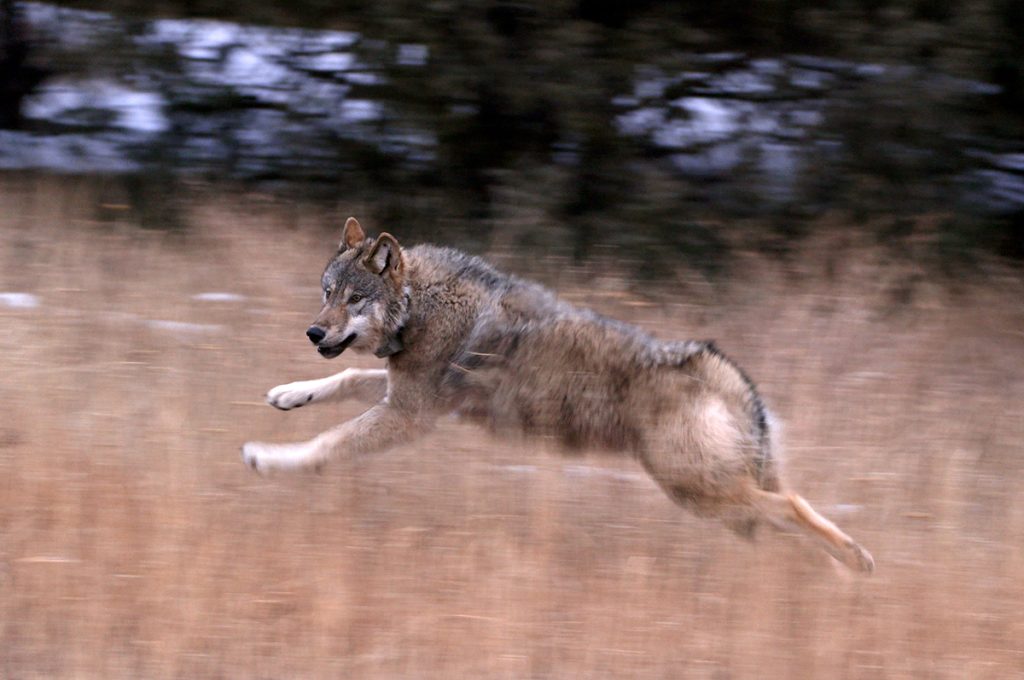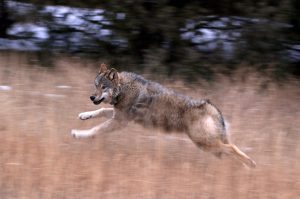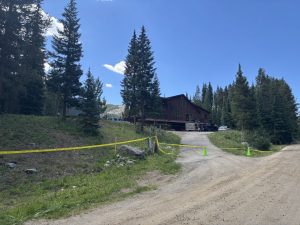Colorado officials still searching for depredating Copper Creek wolf as it confirms August livestock attack
The agency is looking to kill a second member of the pack following additional livestock attacks, including the latest Pitkin County incident on Aug. 7

Colorado Parks and Wildlife/Courtesy Photo
For the past month, Colorado Parks and Wildlife staff have been unable to locate and kill a second Copper Creek wolf responsible for livestock attacks in Pitkin County. In the meantime, the agency has confirmed an additional wolf depredation in the county — marking the eighth attributed to the Copper Creek pack this year.
On Monday, Aug. 18, Luke Perkins, a public information officer for Parks and Wildlife, confirmed that the agency is “still in an active removal period.”
The wildlife agency killed one of the pack’s yearlings in May in an attempt to sway the wolves away from preying on livestock — and toward native ungulate populations — after they were connected to four attacks between May 17 and May 25.
However, because the behavior has continued since the first removal, Parks and Wildlife staff are looking to kill a second member of the pack.
This type of incremental action is recommended by its chronic depredation management directive and allowed by a special 10(j) rule it has from the U.S. Fish and Wildlife Service, which enables the state to kill depredating wolves even with their federal protections under the Endangered Species Act.
The agency began its search for the second pack member on July 20. The search started three days after Parks and Wildlife confirmed wolves were responsible for the death of a calf in the Capitol Creek area and followed producer reports of continued harassment by the wolves on livestock.
Parks and Wildlife will only kill another wolf if it is confident the animal was involved in the livestock attacks. In a recent interview with the Aspen Times Jeff Davis, director of Parks and Wildlife, indicated that it’s often individual wolves targeting livestock in these chronic depredation situations, not the entire pack.
When asked why the search and removal operation has taken so long the second time around, Perkins said, “One of the exacerbating factors in this operation is the terrain where it is occurring.”
“Operations have been occurring in an area where the topography is challenging at best and is difficult to access,” he added.
During the ongoing operations, Parks and Wildlife confirmed that a wolf was responsible for a cow attack in Pitkin County on Aug. 7.
In the report issued following the first lethal removal in May, Parks and Wildlife did not indicate how long the initial operation took. The yearling was killed on May 29, four days after the final depredation event considered in the chronic depredation determination.
To euthanize the yearling, Parks and Wildlife used electronic calling to draw wolves to the area where the May depredations took place. Once the wolf was identified as the male wolf 2405 agency staff shot the wolf with a rifle, according to the report. This wolf was identified for removal because it was known to be directly involved in at least one of the May attacks and was not a breeding member of the pack.
“Removing a breeder, especially when there are pups to provision, is likely to create more conflict because of pack disruption rather than address the issue of managing a chronic depredation situation,” according to the report.

Support Local Journalism

Support Local Journalism
As a Summit Daily News reader, you make our work possible.
Summit Daily is embarking on a multiyear project to digitize its archives going back to 1989 and make them available to the public in partnership with the Colorado Historic Newspapers Collection. The full project is expected to cost about $165,000. All donations made in 2023 will go directly toward this project.
Every contribution, no matter the size, will make a difference.










